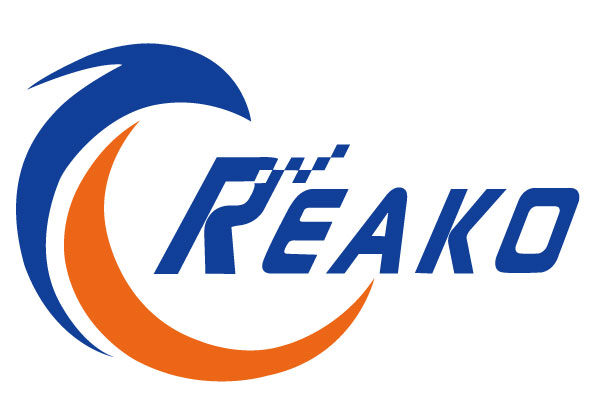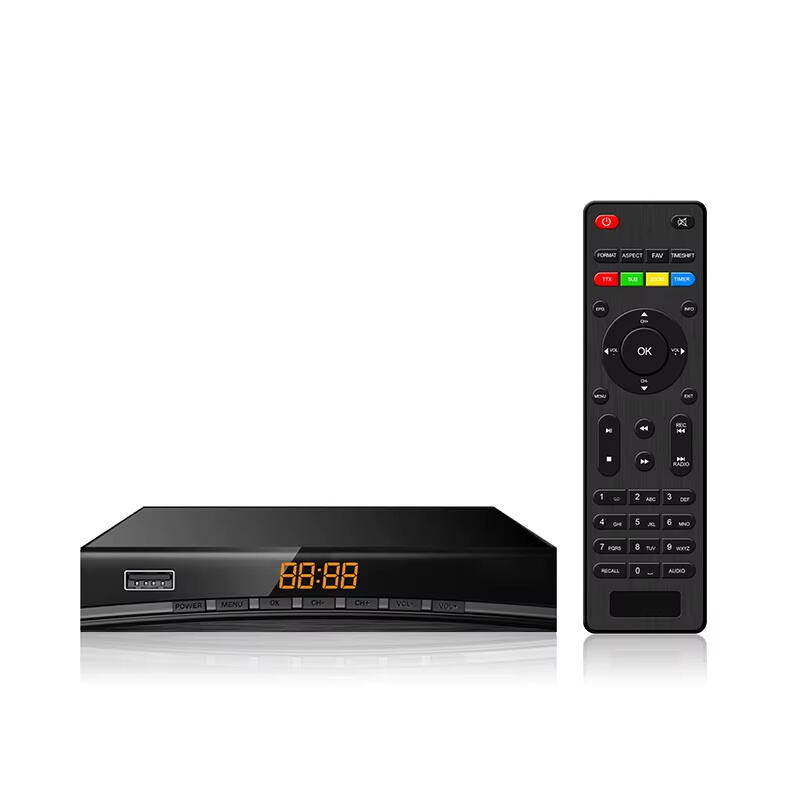Doğru DVB-T2/C alıcısını bulmak bunaltıcı görünebilir, ama böyle olmak zorunda değil. TV'nizle ve sinyal türünüzle sorunsuz çalışan bir cihaza ihtiyacınız var. Harika bir alıcı sadece çalışmakla kalmaz - keskin görseller, net ses ve kayıt veya akış gibi kullanışlı ekstralarla deneyiminizi dönüştürür. İhtiyaçlarınıza en uygun olanı seçin ve asla geriye bakmayacaksınız.
DVB-T2 ve DVB-C'yi Anlamak
DVB-T2 Nedir?
DVB-T2, Dijital Video Yayıncılığı - İkinci Nesil Karasal anlamına gelir. Hava üzerinden dijital TV sinyalleri ileten bir teknolojidir. Bunu, geleneksel anten tabanlı TV'nin modern versiyonu olarak düşünebilirsiniz. DVB-T2 ile, daha iyi görüntü kalitesi, daha fazla kanal ve daha iyi ses alırsınız; bu, eski sistemlere kıyasla bir avantajdır. Birçok ülkede, ücretsiz yayınlar için yaygın olarak kullanılmaktadır. TV sinyaliniz için bir antene güveniyorsanız, muhtemelen ihtiyaç duyacağınız standart budur.
DVB-C Nedir?
DVB-C, yani Dijital Video Yayıncılığı - Kablo, kablo TV ağları için tasarlanmıştır. Sinyalleri havadan almak yerine, bir kablo bağlantısı üzerinden çalışır. Bu sistem, kablo sağlayıcılarının geniş bir kanal ve hizmet yelpazesi sunduğu kentsel alanlarda yaygındır. DVB-C, kararlı bir alım sağlar ve genellikle talep üzerine içerik gibi ek özellikleri destekler. Eğer bir kablo TV hizmetine abone olduysanız, alıcınızın desteklemesi gereken format budur.
Neden fark önemlidir
DVB-T2 ve DVB-C arasındaki farkı anlamak, en iyi alıcıyı seçerken kritik öneme sahiptir. Ana sayfa Yanlış türü seçerseniz, alıcınız sinyalinizle çalışmayacaktır. Örneğin, bir DVB-T2 alıcısı kablo bağlantısıyla çalışmaz ve bunun tersi de geçerlidir. Sinyal türünüzü bilmek, uyumluluk sorunlarından kaçınmanıza yardımcı olur ve kurulumunuzdan en iyi şekilde yararlanmanızı sağlar.
En İyi Alıcıyı Seçmek için Anahtar Özellikler
Sinyal uyumluluğu
Kontrol etmeniz gereken ilk şey, alıcının sinyal türünüzle uyumlu olup olmadığıdır. Eğer bir anten kullanıyorsanız, DVB-T2 alıcısını tercih edin. Kablo TV için ise DVB-C alıcısı en iyi seçenektir. Bazı modeller her ikisini de destekler, bu da eğer emin değilseniz veya gelecekte geçiş yapmayı planlıyorsanız harika bir seçenek olabilir. Satın almadan önce TV'niz ve sinyal sağlayıcınızla uyumluluğu her zaman doğrulayın.
Görüntü ve ses kalitesi
İyi bir alıcı, net görseller ve temiz ses sunmalıdır. En iyi görüntü kalitesini istiyorsanız, Full HD veya 4K desteği gibi özelliklere bakın. Ses için, Dolby Digital veya benzeri teknolojiler büyük bir fark yaratabilir. Bu özellikler, oturma odanızda sinema benzeri bir deneyim yaşamanızı sağlar.
Bağlantı seçenekleri
Alıcınızı TV'nize ve diğer cihazlara nasıl bağlayacağınızı düşünün. HDMI, modern TV'ler için standarttır, ancak eski modeller SCART veya RCA bağlantılarına ihtiyaç duyabilir. Bazı alıcılar ayrıca medya oynatma için USB portları veya çevrimiçi akış için Ethernet/Wi-Fi sunar. Sahip olduğunuz seçenekler ne kadar fazla olursa, kurulumunuz o kadar esnek olur.
Kullanımı Kolay
Kimse kullanımı zor bir cihaz istemez. Basit bir arayüze ve duyarlı bir uzaktan kumandaya sahip bir alıcı arayın. Elektronik program rehberi (EPG) ve otomatik ayarlama gibi özellikler zaman ve çaba tasarrufu sağlayabilir. Teknolojiyle aranız iyi değilse, kullanıcı dostu bir tasarım şarttır.
Bütçe ve Uyumluluk Dikkate Alınması
Fiyat aralıkları ve değer
DVB-T2/C alıcıları satın alırken, fiyat ilk fark edeceğiniz şeylerden biridir. Alıcılar, bütçe dostu modellerden premium seçeneklere kadar geniş bir fiyat aralığında gelir. Giriş seviyesi alıcılar genellikle 30 ile 50 dolar arasında bir fiyata sahiptir. Çok fazla harcamadan temel işlevsellik arıyorsanız, bunlar harika bir seçenektir. Orta seviye modeller, 60 ile 100 dolar civarında fiyatlandırılır ve genellikle daha iyi görüntü kalitesi, daha fazla bağlantı seçeneği ve kayıt gibi ekstra özellikler içerir. 150 doları aşabilen yüksek kaliteli alıcılar, 4K desteği, akış uygulamaları ve daha hızlı performans gibi gelişmiş özellikler sunar.
Ama burada bir şey var—iyi bir alıcı almak için her zaman bir servet harcamanıza gerek yok. Sizin için en önemli olan özellikleri düşünün. Eğer sadece TV izlemek için basit bir cihaza ihtiyacınız varsa, bütçe dostu bir model yeterli olabilir. Öte yandan, eğer program kaydetmek veya içerik akışı yapmak istiyorsanız, orta seviye veya premium bir alıcıya yatırım yapmak buna değer olabilir. Her zaman modelleri karşılaştırarak paranızın en iyi değerini bulmaya çalışın.
TV ve sinyal uyumluluğu
Satın almadan önce, alıcının TV'niz ve sinyal türünüzle uyumlu olduğundan emin olun. Alıcıyı bağlamak için TV'nizin doğru portlara sahip olup olmadığını kontrol edin, örneğin HDMI veya SCART. Eğer TV'niz eskiyse, bir adaptöre ihtiyacınız olabilir. Ayrıca, sinyalinizin karasal (DVB-T2) mi yoksa kablo (DVB-C) mi olduğunu doğrulayın. Bazı alıcılar her ikisini de destekler, bu da eğer emin değilseniz veya daha sonra sağlayıcı değiştirmeyi planlıyorsanız hayat kurtarıcı olabilir.
Bu faktörleri aklınızda bulundurarak, bütçenize ve kurulumunuza mükemmel şekilde uyan en iyi alıcıyı seçebilirsiniz.
Doğru DVB-T2/C alıcısını seçmek karmaşık olmak zorunda değil. İhtiyaçlarınızı ve alıcının kurulumunuza nasıl uyacağını düşünün. Uyumluluk, özellikler ve bütçenize odaklanın. Sizin için en uygun olanı bulmak için güvenilir markaları ve modelleri karşılaştırın. En iyi alıcıyı seçtiğinizde, ev eğlenceniz ciddi bir yükseliş yaşar.


